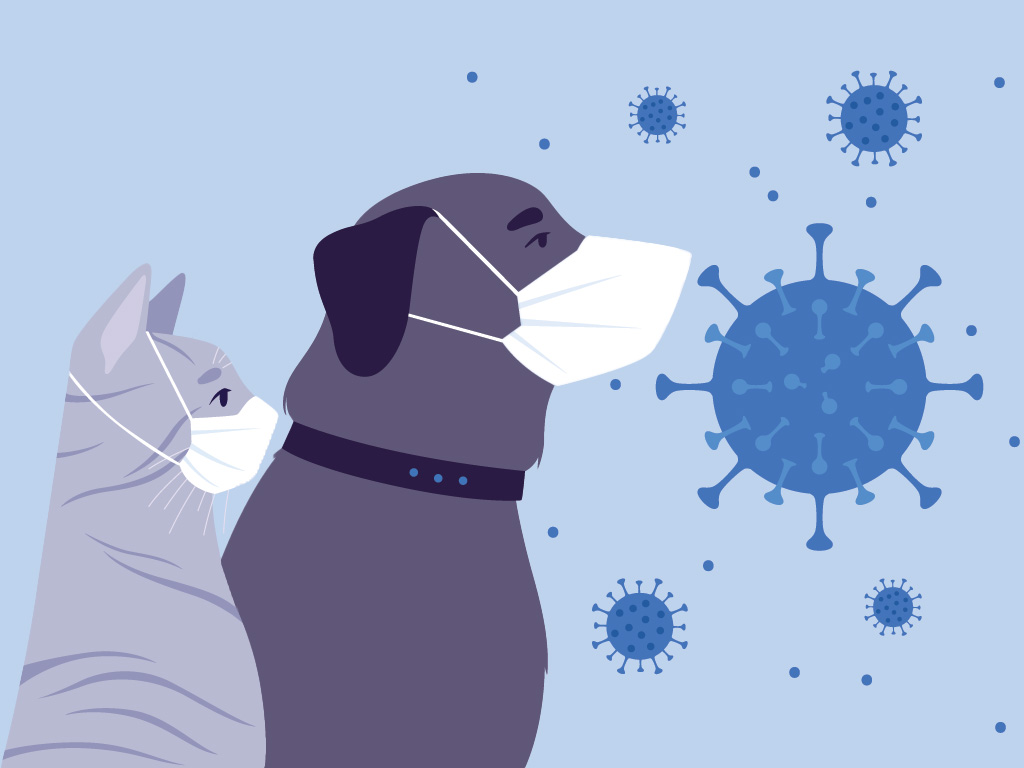Of pets and pathogens: A&M team contributes to first national-data analysis of COVID-19 infections in companion animals

Nine Texas A&M University researchers made key contributions to the first national surveillance study that analyzed companion animal COVID-19 data from across the United States. The study was led by the Centers for Disease Control and Prevention (CDC) and aimed to characterize the clinical and epidemiological features of COVID-19 in companion animals.
The unique, collaborative effort also included researchers from county health departments, state health departments, other universities, and national level labs.
Texas data, collected by Texas A&M researchers, contributed the greatest number of animal cases reported by any state to the project. The Texas A&M COVID-19 & Pets Project, which began in the summer of 2020, was partially funded by the CDC and proved instrumental in providing the Texas data.
“The COVID-19 & Pets Project at Texas A&M included active household pet sampling for two years,” Sarah Hamer, a veterinary epidemiologist at the School of Veterinary Medicine & Biomedical Sciences, said.
Dogs and cats can and have become infected from their owners throughout the pandemic, but often experience mild, self-limiting illness with no strong evidence of onward transmission.
“We’ve detected more than 100 cases in cats and dogs in Texas. This high level is because we were actively looking for the cases rather than relying on passive surveillance,” Hamer said. “I don’t think there’s much difference between Texas and other states that would place our animals at a higher risk of COVID-19 infection. The increased caseload is simply a result of our active efforts to test companion animals living in households with confirmed cases of COVID-19 — often only a day or two after their owner tested positive — early and well into the pandemic.”
The CDC report is the first study to summarize nationally compiled surveillance data on the epidemiologic and clinical characteristics of natural COVID-19 infection in companion animals.
“It’s not rare to find dogs and cats that have tested positive for this infection,” Hamer said. “They’re the animals that people have closest relationships with. Many pathogens — SARS-CoV-2 included — require close contact for transmission to occur, so living with our pets, and sharing our bedrooms and beds with them, especially when we are sick, can provide opportunities for transmission.”
The paper notes that 72% of animals identified through passive surveillance exhibited clinical signs, while only 27% of animals identified through active surveillance exhibited clinical signs. Clinical signs varied by species, with sneezing and lethargy being most common in cats, whereas lethargy and cough were most common in dogs.
The study concludes that animals whose samples test positive for infection with SARS-CoV-2 are commonly exposed to people who have tested positive for the virus.
Contributors to the study include Rebecca Fischer, School of Public Health; Gabriel Hamer, College of Agriculture and Life Sciences; postdoctoral researchers Italo Zecca and Christopher Roundy, graduate students Ed Davila and Rachel Busselman, and research associates Lisa Auckland and Wendy Tang.

